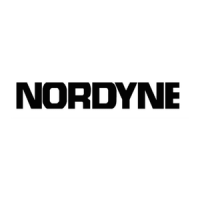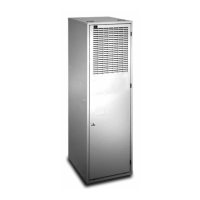
Do you have a question about the Nordyne O4LD-091A-12-RA and is the answer not in the manual?
| Brand | Nordyne |
|---|---|
| Model Number | O4LD-091A-12-RA |
| Category | Furnace |
| Blower Motor | Multi-Speed |
| Stages | 1 |
| Gas Type | Natural Gas |
| Max Temperature Rise | 70°F |
| Min Temperature Rise | 40°F |
| Warranty | 10 Year Heat Exchanger, 1 Year Parts |
Identifies the specific furnace models covered by the manual.
Describes the oil-fired up-flow furnace type and capacity range.
Specifies CSA listing and approved fuel oil types.
References Canadian and US installation codes for proper installation.
Outlines methods for calculating maximum hourly heat loss for sizing.
Discusses placement for ductwork and chimney connection efficiency.
Lists required clearances to combustible materials for safety.
Details proper installation of the furnace with air conditioning systems.
Specifies openings for combustion air in closets or utility rooms.
Addresses combustion air needs in energy-efficient homes.
Details flue pipe slope, size, and chimney connection requirements.
Discusses wall penetrations and relevant safety codes.
Explains the role and installation of the barometric damper for efficiency.
Covers sidewall venting, specific burner needs, and air supply.
Addresses potential infiltration and solutions for sidewall vents.
Explains the EFT's role in controlling fan and burner sequences.
Details dipswitch settings for fan on/off delay times.
Describes the safety function of the high limit control.
References CSA, CAN/CSA C22.1, NFPA-70, and local electrical codes.
Advises on proper electrical circuit installation and service switches.
Specifies voltage, phase, frequency, and amperage for the unit.
Guides on installing humidifiers and power source considerations.
Refers to CAN/CSA B-139 and NFPA No. 31 for fuel piping safety.
Advises on oil filter placement and fuel line requirements.
Discusses how nozzle choice affects firing rates and efficiency.
Explains adjusting air supply for ideal combustion conditions.
Details using a Bacharach scale for smoke testing.
Specifies electrode tip alignment for proper ignition and combustion.
Explains the role of the burner relay and light-sensing cad cell.
Advises checking alignment and condition of the combustion chamber.
Discusses PSC motor, direct drive, and speed adjustment methods.
Explains how to wire blower speed taps and related safety precautions.
Covers air filter inspection/replacement and general furnace checks.
Outlines tasks for professional annual servicing by contractors.
Details procedures for cleaning the heat exchanger components.
Instructions for blower motor lubrication and fan cleaning.
Covers annual nozzle/filter replacement and system checks.
Steps to take before attempting to light the furnace.
Step-by-step guide for igniting and starting the furnace.
How to adjust fan on/off delay settings via dipswitches.
Procedure for measuring and adjusting system temperature rise.
How to test the operation of the high limit safety switch.
Instructions for safely shutting down the furnace.
Provides set-up specifications for Beckett AF series oil burners.
Provides set-up specifications for Beckett AFII series oil burners.
Details on adjusting air supply for Beckett AF and AFII burners.
Specifies electrode gap, position, and distance for proper ignition.
Covers warm-up, pressure testing, smoke tests, and draft settings.
Electrical diagram for chimney vented models (O4LD-091A-12-RA).
Wiring details for the Beckett AF burner connection.
Electrical diagram for direct vent models (O4LD-091A-14-RA-DV).
Wiring details for the Beckett AFII burner connection.
Steps before firing: connections, pressure checks, and air bleeding.
Procedures for starting, bleeding air, and setting pressure/smoke.
How to adjust fan speed based on measured temperature rise.
Detailed procedure for testing the high limit safety switch operation.
How to set the thermostat's heat anticipator based on amperage draw.
Explains the step-by-step operation of the oil primary control for ignition and running.
Describes the LED behavior during normal burner operation states.
Explains LED flashing for lockout, restricted, and recycle states.
Relates LED state to flame sensing and ambient light for troubleshooting.
Initial checks before detailed troubleshooting, including safety and power.
Lists essential checks before examining the oil primary control itself.
Verifies limit switches, power, and thermostat for non-starting motor.
Addresses issues related to the thermostat circuit and wiring connections.
Steps for troubleshooting burner lockout with a flashing indicator light.
Procedures for checking and correcting cad cell view and light exposure.
Steps for replacing cad cell and testing its functionality.
Guidance on checking the cad cell bracket assembly for proper function.
Troubleshooting causes for furnace not starting, like thermostat or power issues.
Addresses issues causing the burner to shut down intermittently.
Troubleshooting electrode, transformer, filter, and pump issues.
Identifies causes like high temp rise, fan timing, or fuel leaks.
Addresses combustion air, draft, and heat exchanger soot issues.
Covers blast tube alignment, nozzle angle, and fire pot issues.
Solutions for insufficient airflow, high limit, or undersized nozzle.
Addresses thermostat location and heat distribution problems.
Solutions for blocked filters, insufficient airflow, or excess airflow.
Addresses duct losses and fan 'fan on' setting issues.
Discusses fan 'fan off' delay settings for initial cool air.
Ensures safety devices and connections are set and secure.
Key information for the homeowner on operation, maintenance, and service.
Lists replacement parts with reference numbers and part numbers.
Specific parts for the Beckett AF oil burner assembly.
Lists components for the direct drive blower assembly.
Specific parts for the Beckett AFII oil burner assembly.
Contains general notes and the manufacturer's contact details.












